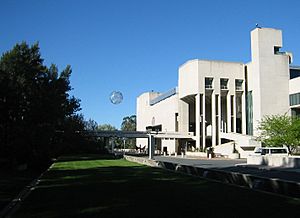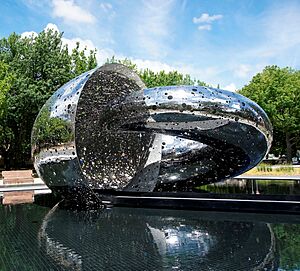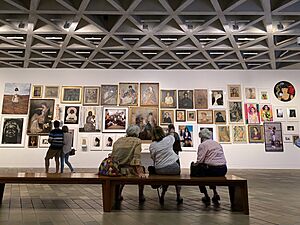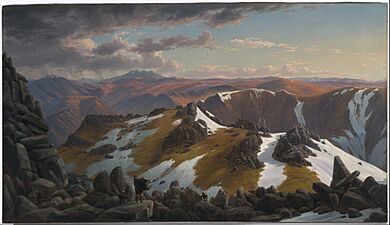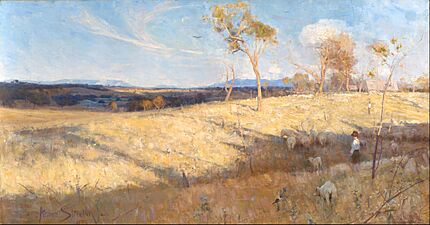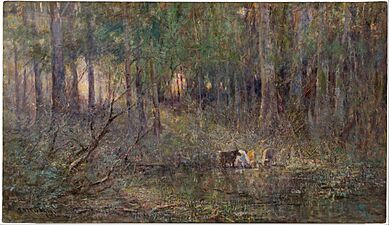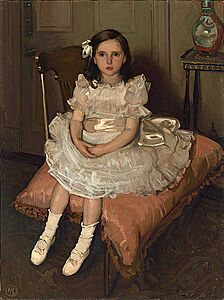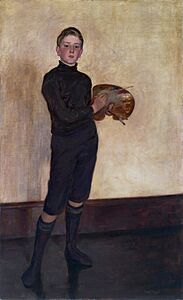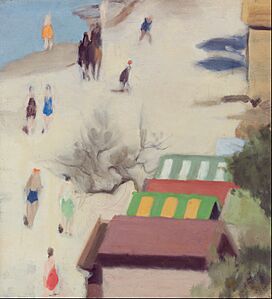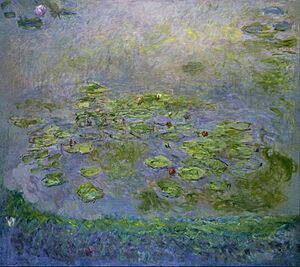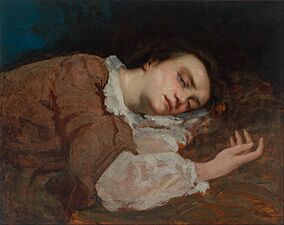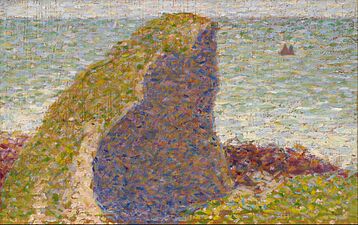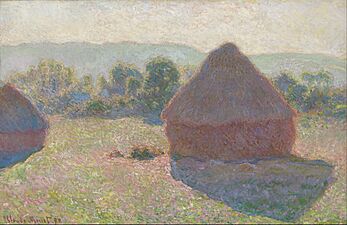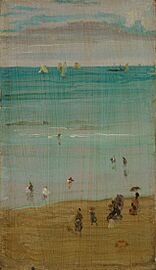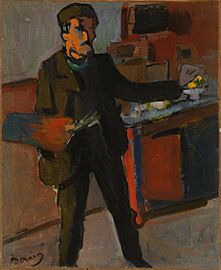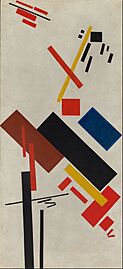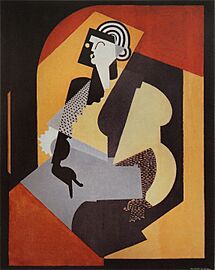National Gallery of Australia facts for kids
 |
|
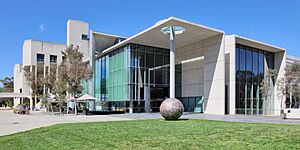
The gallery building seen from the south-west.
|
|
| Former name | Australian National Gallery |
|---|---|
| Established | 1967 |
| Location | Ngunnawal and Ngambri Country, Parkes, Canberra, Australia |
| Type | Art gallery |
| Architect | Colin Madigan |
| Owner | Australian Government |
| Public transit access | ACTION buses (R2 & R6) |
The National Gallery of Australia (NGA) is Australia's national art museum. It is one of the largest art museums in the country, holding a collection of more than 166,000 works of art. Located in Canberra, the gallery was established by the Australian Government in 1967 to share art with the public.
The gallery's collection includes art from Australia, Asia, Europe, and America. It is especially famous for having the world's largest collection of Australian Aboriginal and Torres Strait Islander art.
Contents
History of the Gallery
The idea for a national art gallery was first suggested in the early 1900s by Australian artist Tom Roberts. He talked to several prime ministers about creating a place to keep important Australian art. In 1910, the government agreed and started a committee to collect portraits of important Australian leaders.
For many years, the government collected art but had no building to put it in. The artworks were displayed in Parliament House and other government buildings. Building a gallery was delayed by two world wars and the Great Depression.
Finally, in 1967, Prime Minister Harold Holt announced that a building for the National Gallery would be constructed in Canberra.
Designing and Building the Gallery
Finding the right spot for the gallery was tricky. It had to fit into the special design of Canberra's Parliamentary Triangle. In 1968, architect Colin Madigan won a competition to design the building.
Construction started in 1973. The building was officially opened by Queen Elizabeth II in 1982. The total cost to build it was $82 million.
The Gallery's Building and Gardens
The National Gallery building is a famous example of Brutalist architecture. This style is known for its large, blocky shapes and raw concrete surfaces. The building is surrounded by sculpture gardens filled with Australian native plants.
Inside, the building has three levels of galleries. The main floor has large spaces for showing Indigenous Australian and international art. The lower level displays Asian art, and the top floor has smaller galleries for Australian art. The design uses triangles in its ceilings and columns, giving the building a unique look.
New Additions and Changes
The gallery has been expanded over the years. In 1997, new galleries were added for special temporary exhibitions.
A much bigger change happened in 2010, when a new entrance and more gallery space were opened. This new section was created to better display the amazing collection of Australian Indigenous art. It also gave the gallery a fresh, modern entrance facing King Edward Terrace.
The Sculpture Garden
The sculpture garden is an outdoor area where visitors can see large artworks. It features famous sculptures like Cones by Bert Flugelman and Hill Arches by Henry Moore. One of the most popular works is a Fog sculpture by Fujiko Nakaya, which creates a cloud of mist between noon and 2 p.m.
In 2024, a huge new sculpture called Ouroboros by artist Lindy Lee was placed near the gallery's entrance. It is based on an ancient symbol of a snake eating its own tail.
The Gallery's Directors
A director is in charge of running the gallery, choosing new art, and planning exhibitions. The NGA has had several important directors.
- James Mollison (1977–1990): The first director, Mollison, built the gallery's collection. He famously bought Blue Poles by Jackson Pollock and Woman V by Willem de Kooning. These purchases were controversial at the time because of their high price, but are now seen as brilliant additions.
- Betty Churcher (1990–1997): Known as "Betty Blockbuster," she brought many popular exhibitions to the gallery. She also changed the gallery's name from the Australian National Gallery to its current name.
- Brian Kennedy (1997–2004): Kennedy made admission to the gallery free for the permanent collection. He also acquired important works like A Bigger Grand Canyon by David Hockney.
- Ron Radford (2004–2014): Radford oversaw the building of the new entrance and Indigenous art wing. He focused on strengthening the gallery's collection of Australian and Indigenous art.
- Gerard Vaughan (2014–2018): During his time, the gallery worked to return a stolen statue of the Hindu god Shiva to India. This showed the gallery's commitment to ethical collecting.
- Nick Mitzevich (2018–present): Mitzevich has led the gallery through challenges like bushfire smoke and the COVID-19 pandemic. He has focused on new initiatives like Know My Name to celebrate women artists.
Special Exhibitions and Programs
The NGA hosts many special exhibitions that bring art from around the world to Australia. It also creates programs to highlight different parts of its collection.
National Indigenous Art Triennial
First held in 2007, this major exhibition happens every three years. It showcases the best new art by Aboriginal and Torres Strait Islander artists from all over Australia. The fourth Triennial, titled Ceremony, took place in 2022.
Know My Name
Launched in 2019, Know My Name is a special project to celebrate Australian women artists. The gallery realized that only a quarter of the art in its collection was made by women. This initiative aims to fix that by holding exhibitions, publishing books, and buying more art by women.
The main exhibition, Know My Name: Australian Women Artists 1900 to Now, was held in two parts from 2020 to 2022. It featured famous artists like Margaret Olley, Tracey Moffatt, and Emily Kame Kngwarreye.
The Art Collection
The National Gallery's collection is huge and varied, with art from many different cultures and time periods.
Australian Aboriginal and Torres Strait Islander Art
The gallery has the world's most important collection of art by Australia's First Peoples.
A key work is The Aboriginal Memorial. It is made of 200 painted log coffins, one for each year of European settlement from 1788 to 1988. The artwork honors all the Indigenous people who died defending their land.
The collection also includes works by famous artists like Albert Namatjira and Tommy McRae.
Australian Art (non-Indigenous)
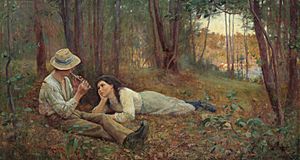
This collection tells the story of Australian art since European settlement. It features famous paintings that many Australians know and love.
Highlights include:
- Golden Summer, Eaglemont by Arthur Streeton
- The Ned Kelly series by Sidney Nolan
- The Drover's Wife by Russell Drysdale
- The Skywhale by Patricia Piccinini
-
Frederick McCubbin, Violet and Gold, 1911
-
Violet Teague, The boy with the palette, 1911
-
Clarice Beckett, Sandringham Beach, 1933
Western Art
The international collection features amazing art from Europe and America, mostly from the late 19th and 20th centuries.
Famous works include:
- Water Lilies by Claude Monet
- Blue Poles by Jackson Pollock
- Woman V by Willem de Kooning
- A Bigger Grand Canyon by David Hockney
- A complete set of the Vollard Suite prints by Pablo Picasso
-
Gustave Courbet, Study for Les Demoiselles des bords de la Seine, 1856
-
Paul Cézanne - L'Après-midi à Naples (Afternoon in Naples) - Google Art Project.jpg
Paul Cézanne, L'Après-midi à Naples (Afternoon in Naples), 1875
-
Georges Seurat, Study for Le Bec du Hoc, Grandcamp, 1885
-
Claude Monet, Meules, milieu du jour (Haystacks, midday), 1890
-
James McNeill Whistler, Harmony in Blue and Pearl (The Sands, Dieppe), 1885
-
André Derain, Self-portrait in studio, 1903
-
Kasimir Malevich, Stroyuschiysya dom (House under construction), 1915
-
Albert Gleizes, Femme au gant noir (Woman with Black Glove), 1920
Asian Art
The gallery also has a large collection of art from South and East Asia. This includes beautiful sculptures, paintings, and textiles from countries like India, China, Japan, and Thailand. One of the oldest pieces is a ceramic horse figure from China's Tang dynasty.
Images for kids
-
Tommy McRae, Melbourne tribe holding corroboree after seeing ships for the first time
-
Henry Moore's Hill Arches in the Sculpture Garden
See also
 In Spanish: Galería Nacional de Australia para niños
In Spanish: Galería Nacional de Australia para niños
- Art of Australia
- Art Gallery of New South Wales
- Art Gallery of South Australia
- List of national galleries
- List of sculpture parks
- National Gallery of Australia Research Library
- National Gallery of Victoria
- National Portrait Gallery


